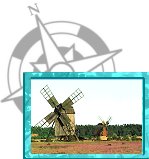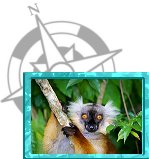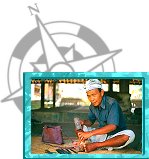With support from

|
|
|
| |
REGIONAL LINKS DIRECTORY
|
|
|
|
| |

Welcome to the GIN regional links directory.
The regional directory is categorised under nine major geographic regions. Each region contains
a list of websites specifically relating to the chosen region.
All websites listed here have been individually chosen based on their quality of content and
appropriateness to the specific region they represent. All links contained within this directory
are regularly checked to ensure they are currently available and do not lead to broken or missing
links. If you do happen to come across a broken link please let us know - email
our webmaster describing the
offending link and we promise to attend to it at our earliest opportunity.
|
|
|
|
ANTARCTIC
The world's coldest and most inaccessible region consists of an ice-covered continent, Antarctica, centred on the South Pole and surrounding this, the vast Southern Ocean, which is largely covered by floating pack ice. The Antarctic is much colder than the Arctic and its only inhabitants are visiting scientists. Various nations claim different parts of the Antarctic mainland. In 1959, twelve nations signed the Antarctic Treaty and agreed that Antarctica should be used for peaceful purposes only.
|
 | |
|
|
|
ARCTIC
The Arctic is an ocean more or less surrounded by land - just the opposite of the Antarctic, which is a huge land mass surrounded by water. The Arctic region generally refers to a rather large land area round the North Pole but the ocean is nearly five times as large as the Mediterranean and is covered with drifting ice which is sometimes 30m thick. Between Greenland and the Canadian mainland is Baffin Island, together with many smaller islands.
|
 | |
|
|
|
|
|
BALTIC
 Ars Baltica
Ars Baltica
 B7 Baltic Islands Network
B7 Baltic Islands Network
 Baltic Assembly
Baltic Assembly
 Baltic Development Forum
Baltic Development Forum
 Baltic Environmental Forum
Baltic Environmental Forum
 Baltic Gateway
Baltic Gateway
 Baltic Green Belt
Baltic Green Belt
 Baltic Heritage Cooperation
Baltic Heritage Cooperation
 Baltic Institute of Finland
Baltic Institute of Finland
 Baltic Local Agenda 21 Forum
Baltic Local Agenda 21 Forum
 Baltic Marine Environment Bibliography
Baltic Marine Environment Bibliography
 Baltic Marine Environment Protection Commission (The Helsinki Commission)
Baltic Marine Environment Protection Commission (The Helsinki Commission)
 Baltic Metropoles Network
Baltic Metropoles Network
 Baltic Ports Organization
Baltic Ports Organization
 Baltic Region Healthy Cities Association
Baltic Region Healthy Cities Association
 Baltic Sea 2020 Foundation
Baltic Sea 2020 Foundation
 Baltic Sea Action Group
Baltic Sea Action Group
 Baltic Sea Chambers of Commerce Association
Baltic Sea Chambers of Commerce Association
 Baltic Sea Experiment [BALTEX]
Baltic Sea Experiment [BALTEX]
 Baltic Sea Forum
Baltic Sea Forum
 Baltic Sea Heritage Co-operation
Baltic Sea Heritage Co-operation
 Baltic Sea Parliamentary Conference
Baltic Sea Parliamentary Conference
 Baltic Sea Portal
Baltic Sea Portal
 Baltic Sea States Subregional Co-operation
Baltic Sea States Subregional Co-operation
 Baltic Sea Tourism Commission
Baltic Sea Tourism Commission
 Baltic Sea Trade Union Network
Baltic Sea Trade Union Network
 Baltic University Programme
Baltic University Programme
 Clean Baltic Sea
Clean Baltic Sea
 Coalition Clean Baltic
Coalition Clean Baltic
 Council of the Baltic Sea States
Council of the Baltic Sea States
 Euroregion Baltic
Euroregion Baltic
 Leibniz Institute for Baltic Sea Research
Leibniz Institute for Baltic Sea Research
 Nordic Archipelago Cooperation in the Baltic Sea
Nordic Archipelago Cooperation in the Baltic Sea
 Nordic Environment Finance Corporation
Nordic Environment Finance Corporation
 Northern Dimension Partnership in Public Health and Social Wellbeing
Northern Dimension Partnership in Public Health and Social Wellbeing
 Save Our Baltic Sea
Save Our Baltic Sea
 Sustainable Coastal Zone Development in the Baltic Sea Region
Sustainable Coastal Zone Development in the Baltic Sea Region
 UNEP GRID-Arendal [Baltic Resources]
UNEP GRID-Arendal [Baltic Resources]
 Union of the Baltic Cities
Union of the Baltic Cities
 Vision & Strategies around the Baltic Sea 2010
Vision & Strategies around the Baltic Sea 2010
|
 | |
|
|
|
CARIBBEAN
The Caribbean Sea is bounded by the West Indies, the east coast of Central America and the north coast of South America. It is nearly 2,400km long and from 650 to 1,100km wide. The many islands surrounding the Caribbean are really the peaks of mountains submerged beneath the sea. After the completion of the Panama Canal in 1914, this sea became one of the busiest waterways in the world, lying on the main route between the Atlantic and Pacific oceans.
|
 | |
|
|
|
INDIAN OCEAN
This is the third largest ocean in the world - after the Pacific and Atlantic oceans - and covers an area of 73,555,715sq km. The Indian Ocean is bordered by Africa on the west, India on the north and Australia on the east, but to the south there is open sea as far as the Antarctic. The southern half of the Indian Ocean has no large islands except Madagascar. Those in the northern half include Sri Lanka and Socotra besides many smaller ones.
|
 | |
|
|
|
MEDITERRANEAN
The Mediterranean Sea is almost landlocked, being joined with the open Atlantic Ocean only by the narrow Strait of Gibraltar. It lies between Europe and Africa and is more than 3,220km long. The north side of the Mediterranean is broken up by the Adriatic and Aegean seas as well as by the peninsulas of Italy and Greece. Most of the islands are in the northern part of the sea. In 1869 the Suez Canal was opened, thus making the Mediterranean the shortest sea route between Europe and the East.
|
 | |
|
|
|
NORTH ATLANTIC
The northern half of the world's second largest ocean is rich in islands, varied coastline and tributary seas. On the west are the Caribbean, the Gulf of Mexico, the Gulf of St. Lawrence, Hudson Bay and Baffin Bay. To the east are the Mediterranean, the Black Sea, the North Sea and the Baltic Sea. As well as purely oceanic islands there are those which rise from the Mid-Atlantic Ridge, including the Azores. Other islands such as The Canaries and Madeira rise from Africa's continental margins.
|
 | |
|
|
|
PACIFIC
The Pacific is the largest and deepest of all the oceans with an area of 165 million square kilometres, an area greater than that of all the world's lands put together. At its greatest width the Pacific measures 17,220km. It extends from the Bering Straits of the Arctic Circle, to Cape Adare, Antarctica, a distance of 15,450km. There are very few islands in the eastern Pacific. Its northern and western borders are fringed with chains of islands including The Aleutians, The Kurils and the Ryukus. The Inner Pacific islands are divided into three main groups - Melanesia, Micronesia and Polynesia.
|
 | |
|
|
|
SOUTHEAST ASIA
Southeast Asia is the name for the peninsular area of the Asian continent that lies between India and China, and stretches south along a chain of islands towards Australia. The countries of mainland Southeast Asia are Malaysia, Burma, Vietnam, Laos, Kampuchea, Thailand and Singapore. Further south lies insular (island) Southeast Asia. This is made up of thousands of islands containing the countries of the Philippines, Brunei, Indonesia and East Timor.
|
 | |
|
|
|